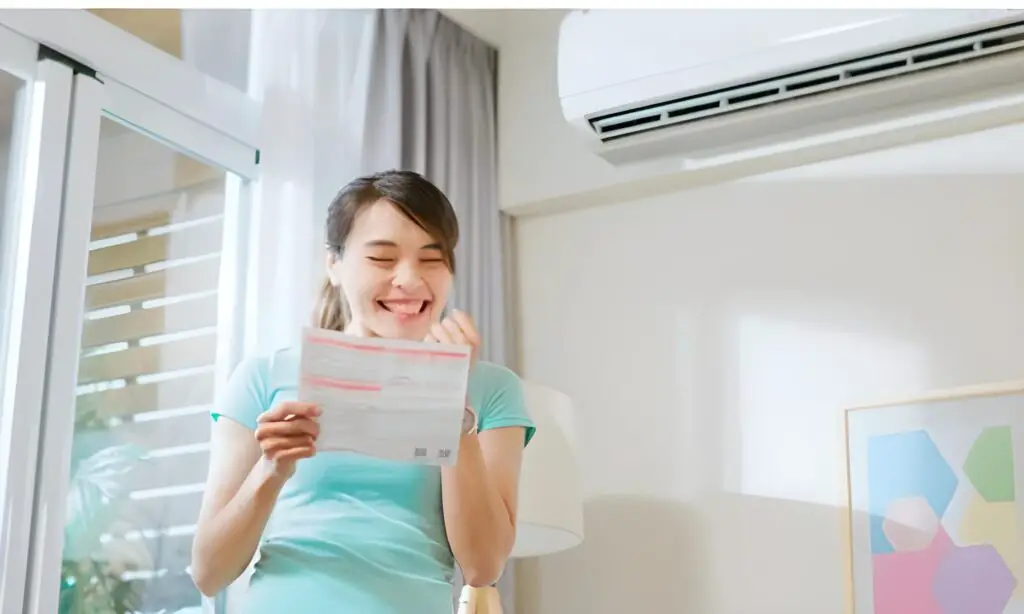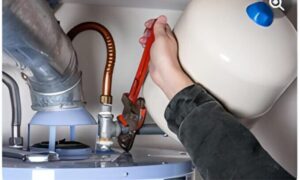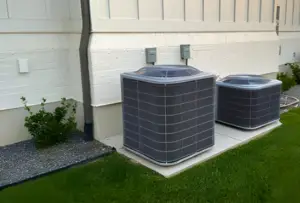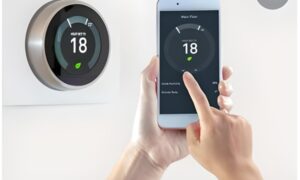One of the most obvious benefits of saving energy is the potential for lower utility bills and saving money. Investing in energy-efficient measures can also save families money in the long run, as they may not need to replace appliances as frequently and will have lower energy bills over time. Energy-efficient homes are typically more comfortable to live in, as they are better insulated and can be more effectively heated and cooled.
By using the following practices, you can reduce the amount of energy you use and save money on your monthly energy bills. It’s good for your wallet and good for the planet.
Table of Contents
Keep your thermostat at a consistent temperature.
Maintaining a consistent thermostat temperature is a simple but effective way to save energy and money at home. Here’s how it works:
Set your thermostat to a comfortable temperature. Depending on your personal preference, this may be anywhere from 68 to 72 degrees Fahrenheit.
Keep your thermostat at this consistent temperature as much as possible. Avoid turning the heat up too high when you’re feeling cold, and try to keep the thermostat set to a lower temperature when you’re not home. This will help your heating system work more efficiently and use less energy.
Use a programmable thermostat.
Using a programmable thermostat is a simple and effective way to save energy and money at home. Here’s how it works:
Install a programmable thermostat. These thermostats can be easily installed by a professional or by following the manufacturer’s instructions.
Set the thermostat to your desired temperature. Depending on your personal preference, this may be anywhere from 68 to 72 degrees Fahrenheit.
Program the thermostat to adjust the temperature automatically. Most programmable thermostats allow you to set different temperatures for different times of the day. For example, you can set the thermostat to lower the temperature while you’re at work and then turn it back up just before you come home. This can help you save energy without sacrificing comfort.
Monitor your energy use.
Monitoring your energy use is a simple but effective way to save energy and money at home. Here are some tips for monitoring your energy use:
Use a smart meter or energy monitor. A smart meter is a device that measures your energy use in real time and sends the data to your utility company. An energy monitor is a device that you can use to track your energy use at home. Both of these devices can help you see how much energy you’re using and where you can save.
Check your energy bills. Your energy bills will show you how much energy you’re using each month and how much it’s costing you. By looking at your bills over time, you can see if your energy use is increasing or decreasing and identify areas where you can save.
Monitor your appliances and electronics. Many appliances and electronics have energy-saving features, such as power-saving modes or sleep timers. By using these features, you can save energy and money.
Use an app or website. There are many apps and websites that can help you monitor your energy use and find ways to save. These tools can give you insights into your energy use and suggest ways to reduce it.
Use energy-efficient light bulbs.
Using energy-efficient light bulbs is a simple and effective way to save energy and money at home. Here’s why energy-efficient light bulbs are a good choice:
They use less energy. Energy-efficient light bulbs, such as LED bulbs, use up to 75% less energy than traditional incandescent bulbs. This means they can help you save money on your electricity bills.
They last longer. Energy-efficient light bulbs have a longer lifespan than traditional incandescent bulbs, so you’ll need to replace them less often. This can save you money on replacement costs and reduce waste.
They produce less heat. Energy-efficient light bulbs produce less heat than traditional incandescent bulbs, which can be beneficial in the summer months when you’re trying to keep your home cool.
They come in a variety of styles. Energy-efficient light bulbs are available in a range of styles, including traditional, candle-shaped, and globe-shaped bulbs. You can choose the style that best fits your needs and tastes.
Seal and insulate your home.
Sealing and insulating your home is a simple and effective way to save energy and money. Here’s why sealing and insulating your home is a good idea:
It can reduce drafts and leaks. Drafts and leaks can let in outside air and cause your heating and cooling systems to work harder. By sealing and insulating your home, you can reduce drafts and leaks and keep the temperature inside your home more consistent.
It can save you money on your energy bills. By sealing and insulating your home, you can reduce energy consumption and lower energy bills.
It can improve the comfort of your home. By sealing and insulating your home, you can reduce drafts and create a more comfortable living environment.
It can help the environment. By using less energy, you can reduce your carbon footprint and help the environment.
Here are some ways to seal and insulate your home:
Check for drafts and leaks. Look for areas where air can escape, such as around windows and doors, and seal them with weather stripping or caulk.
Insulate your attic and walls. Adding insulation to your attic and walls can help keep the heat in during the winter and the cool air in during the summer.
Install energy-efficient windows. Energy-efficient windows can help reduce drafts and leaks and improve the insulation of your home.
Use energy-efficient appliances.
Using energy-efficient appliances is a simple and effective way to save energy and money at home. Here’s why energy-efficient appliances are a good choice:
They use less energy. Energy-efficient appliances are designed to use less energy than standard models, which can help you save money on your energy bills.
They have a longer lifespan. Energy-efficient appliances often have a longer lifespan than standard models, so you’ll need to replace them less often. This can save you money on replacement costs and reduce waste.
They may be eligible for rebates and tax credits. Many energy-efficient appliances are eligible for rebates and tax credits, which can help you save money on the initial purchase price.
They come in a variety of styles and sizes. Energy-efficient appliances are available in a range of styles and sizes, so you can choose the one that best fits your needs and preferences.
When it’s time to replace an old appliance, look for Energy Star-certified models to ensure that you’re getting a high-quality, energy-efficient product.
Use Hot water efficiently.
Using hot water efficiently is a simple and effective way to save energy and money at home. Here are some tips for using hot water efficiently:
Take shorter showers. Shorter showers use less hot water and can help you save money on your water and energy bills.
Use low-flow showerheads. Low-flow showerheads use less water and can help you save money on your water and energy bills.
Wash your clothes in cold water. Most detergents are effective at cleaning clothes in cold water, so washing your clothes in cold water can save energy and money.
Fix any leaks. Leaks can waste a lot of hot water and increase your energy and water bills. Fixing leaks can help you save money and reduce waste.
Insulate your hot water tank and pipes. Insulating your hot water tank and pipes can help keep the water hot for longer and reduce the amount of energy needed to heat the water.
Wash your clothes in cold water.
Washing your clothes in cold water is a simple and effective way to save energy and money at home. Here’s why washing your clothes in cold water is a good idea:
It uses less energy. Washing your clothes in cold water uses less energy than washing them in hot water, which can help you save money on your energy bills.
It’s good for your clothes. Many clothes, especially delicate fabrics, can be damaged by hot water. Washing your clothes in cold water can help preserve their color and shape.
It’s good for the environment. Washing your clothes in cold water uses less energy, which reduces your carbon footprint and helps the environment.
Most detergents are effective in cold water. Most modern detergents are effective at cleaning clothes in cold water, so you don’t have to worry about your clothes not getting clean.
Replace your air filters.
Replacing your air filters is a simple and effective way to save energy and improve the air quality in your home. Here’s why replacing your air filters is a good idea:
It can save energy. Dirty air filters can restrict the flow of air, causing your heating and cooling systems to work harder and use more energy. By replacing your air filters, you can improve the efficiency of your systems and save energy.
It can improve the air quality in your home. Air filters help remove contaminants and allergens from the air, improving the air quality in your home. By replacing your air filters regularly, you can help keep the air in your home clean and healthy.
It can extend the life of your heating and cooling systems. Replacing your air filters regularly can help prevent dirt and debris from building up in your systems, which can extend their lifespan and save you money on repairs and replacements.
It’s easy to do. Replacing your air filters is a simple task that can usually be done in just a few minutes. Many air filters are easily accessible and can be replaced without any special tools.
Dress appropriately for the weather inside your home.
This is another smart effective way to save energy. There are several ways to save energy by dressing appropriately:
Wear layers of clothing in the winter to stay warm without cranking up the heat. Wearing thermal or insulated clothing can help keep you warm and reduce the need for heating.
Wear lightweight, loose-fitting clothes made of natural fibers in the summer to stay cool. Dark colors absorb heat and can make you feel even hotter, so try to avoid wearing them.
Adjust your clothing to the temperature inside your home. If you’re too warm or cold, you might be tempted to turn up the heat or air conditioning, which can use a lot of energy. Instead, try adding or removing layers of clothing to find a comfortable temperature.
Use blankets and throws to add an extra layer of warmth when needed. This can help you stay comfortable without turning up the heat too high.
If you tend to get cold easily, consider wearing socks or slippers to help keep your feet warm. This can help you stay comfortable without turning up the thermostat.








